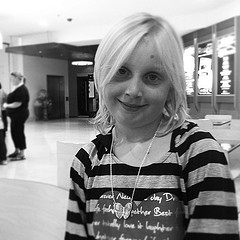A Crazy Month of Learning
For about the last month, I have been on a massive learning journey. Beginning with the CEGSA 2012 conference in the school holidays, I have been exposed to information, discussion and new connections that have forced me to reflect and build on my ideas around the use of 21st century tools in the classroom and, more importantly, the way that they are presented to teachers and students.
ICTs have always been a big part of learning programs in my classroom. Engaging students through film and use of modern tools is a core part of what we do. The frustration for me has been getting others to give this type of learning a try. I think most of us agree that the ‘I don’t do computers’ attitude is unacceptable. In my efforts to combat this attitude I was failing at supporting other teachers in the way that THEY needed. On reflection, what I was doing was trying to support them with what I THOUGH they needed.
The work of Alec and George Couros has been a big part of this recent learning journey. The passionate presentations given at the CEGSA and Middle Years of Schooling Association conferences helped me to build on my use of 21C tools. It opened my eyes to new ways of connecting my learning. George and Alec refocussed the importance of strengthening my own PLN (of which they are now an important part) and also showed me ways that my students can access tools to build their own network of learners. Among my better, stronger PLN there have been many who have planted the seeds of some ideas I would like to see implemented in my school. Most importantly, I believe these new ideas will not only improve learning in my classroom, but offer a new way to present the use of 21C tools to other teachers in a differentiated and supportive way.
CEGSA
The Computers in Education Group of South Australia has been around for a long time, but has been pretty well ignored by our school. Not ignored through a lack of interest, but through being lost in the pile of ‘stuff’ that happens in schools. After the conference, and looking at the regular program of workshops that are available, I feel that this is a group that we should be promoting to staff in our school.
Digital Leaders
Through a TeachMeet and some Twitter discussions between Nick Jackson, and educator in the UK and Al Upton, a South Australian teacher, I have stumbled upon the idea of student as digital leaders in schools. Digital leaders would be responsible for trouble shooting IT issues but also for planning and implementing workshops and training for both other students and teachers. I see a huge advantage in this, not only for the learning of the leaders themselves but also for teachers. With the implementation of these leaders, both students and teachers will have access to more regular support and training on topics and tools that are relevant to them. They will have an opportunity to be guided as they learn along side their students.
TeachMeets
TeachMeets are growing in popularity. I would like to see these become a regular part of our school environment. Perhaps a regular part of staff meeting time, and definitely among schools in our area. Having these regularly would better enable local connections but also offer a more regular time for sharing learning and ideas among our staff. The more we are accessing these tools, the more comfortable people will become with their use.
Our Online Identity
Developing an online identity is becoming increasingly important. As a school (and as individuals) we need to take control of our online identity. Having a purposeful online presence has to be a better option than just reacting to ‘stuff’ that appears. Online spaces give us an opportunity to connect with families and potential families in places that they already go. It gives us a chance to get out the message that we want to get out. The school newsletter is not enough anymore.
Some of these things are pretty simple to put into action. Others require a shift in thinking from staff that haven’t had the privilege of participating in this learning over the last month. It is an exciting time.



Recent Comments